The State of the Generative Art Market [2023 Update]
The state of the generative art market in 2023. Let's review fundamental concepts, platforms, galleries and interesting blockchain stats.
This article was originally written on November 2022 and updated on June 2023.
Last week, I talked about the generative art market at Bright Moments Mexico City. I shared my view on the movement, considering popular concepts, the landscape of marketplaces and platforms, and some exciting blockchain stats. This is a summary of my talk's main points.
Before getting into specifics, let’s start with a fundamental question…
What’s Generative Art?
“...any art practice where the artist uses a system, such as a set of natural language rules, a computer program, a machine, or other procedural invention, which is set into motion with some degree of autonomy contributing to or resulting in a completed work of art.”
Philip Galanter, Texas A&M University, 2003.
I particularly like this definition because it supports various techniques and styles, from generative coded art to art made with artificial intelligence.
Generative Art Landscape - Fundamentals
Honestly, I wasn’t 100% sure what to call this diagram. I started with shape & forms, then moved to techniques, and ended up in fundamentals. The goal is to organize all the concepts, methods, and technical styles in one place.
The left side goes through generative coded art. The off-chain group corresponds to computer art pioneers making computer artwork since the 60s (when blockchain didn’t exist), such as Herbert W. Franke. Short-form and long-form terms were coined by Tyler Hobbs1, who also created QQL2, together with Dandelion Wist.
QQL is the first evolution of the long-form concept, but it is also worth mentioning the long-structure innovation present in Dario Lanzas’ Catharsis (released with gmStudio).
Here are very straightforward definitions for each term.
Short-Form: an artist creates an algorithm and curates the outputs before publishing them.
Long-Form: an artist creates and submits an algorithm to a long-form generative art platform (e.g., FxHash or ArtBlocks) and doesn’t control the outputs.
QQL: collectors can produce as many outputs as they want before selecting the one to mint.
Long-Structure: an artist creates an algorithm that keeps track of all the iterations to support dynamics that somehow connect different outputs together.
When we move to the diagram’s right side (AI art), there is a clear difference in the process when using tools like Midjourney or Dall E / 2 which simplify the setup and accept prompts as input vs. the cases where the artists come up with their own setup. Many elements affect an artificial intelligence system, such as algorithms, models, or data sets. How the data set is created and used is a vital part of the process. For example, artists can use proprietary images or open-sourced images as input to train the models. Neural networks are a kind of model which try to imitate the neural system; popular examples are Generative Adversarial Networks (GANs) and Convolutional neural network (CNN).
Most of these concepts are relatively new, especially when applied to generative art NFTs on the blockchain. Techniques aren’t the only area where we have seen tremendous innovation but also in the marketplaces and platforms supporting these techniques.
Generative Art Landscape - Marketplaces, Galleries, Memberships
This diagram should be helpful for those artists and collectors entering the space (I probably missed many niche players). In just two years, many categories have been established, exemplifying how dynamic this space is.
I’d bet this landscape snapshot will look very different one year from now.
The FTX Impact on Generative Art
One of the biggest crypto exchanges, FTX, filed for bankruptcy after multiple days of drama and uncertainty. I wrote about the details and the impact on generative art here.
After five days, the negative effect on generative art was much lower than pfps. Although it might be too early to make assumptions, generative art might have an intrinsic value that isn’t tight to the crypto economy and crypto coins’ worth.
Bridging the Gap Between ArtBlocks and FxHash
The two leading players in long-form generative art collections are ArtBlocks and FxHash. Both platforms are very different, as ArtBlocks is curated, runs on Ethereum, and is more than two years old. At the same time, FxHash is open (anyone can create and submit a generative collection as long as they follow the platform guidelines), runs on Tezos, and just turned one year old.
At the moment, the volume and value of ArtBlocks collections are much higher, as was demonstrated in this analysis. This opens the door for multiple questions: 1) how influential is the blockchain where the artwork is minted? 2) how important is the curation process? 3) will we see a closer gap between both platforms?
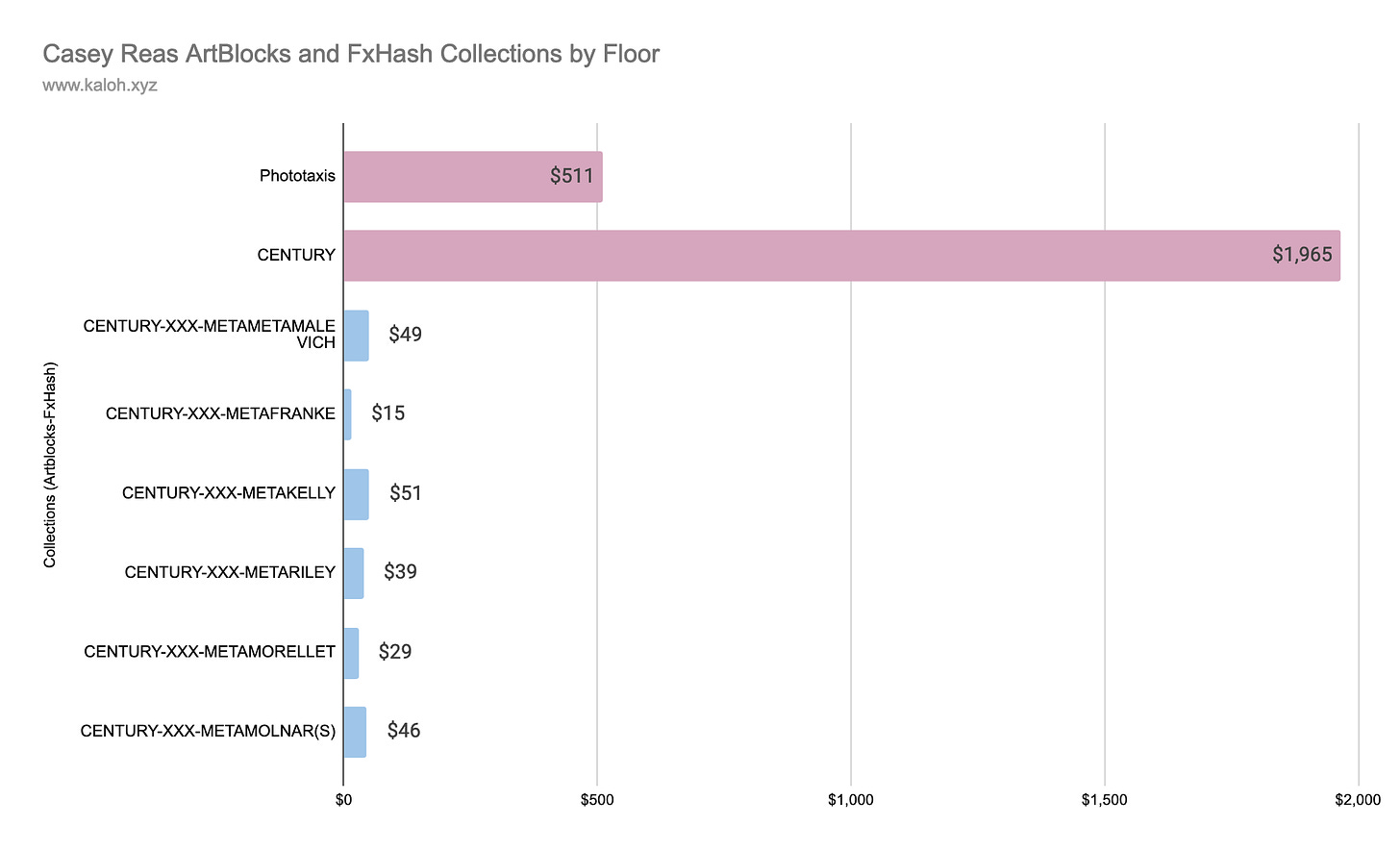
Comparing Traditional Art Market to ArtBlocks/FxHash
Even factoring in the explosive growth of generative art during the last two years, the reality is that ArtBlocks and FxHash combined represent just 1/60 or 1.6% of the traditional art market.
These numbers make it easy to appreciate how tiny it remains relative to the broader art market (collectible, jewelry, and antique markets).
Key Takeaways 2022
The generative art space is flourishing quickly regarding the diversity of techniques and platforms.
The generative art value might be slowly decoupling from the crypto economy.
The generative art market is still tiny compared to the traditional art market.
Updated 2023
The biggest change since I wrote this article is the emergence of AI art. More artists and AI collections are following the generative coded art steps.
After the FTX event that unfolded in 2022, crypto has been in a downtrend and what is considered a bear market. This has affected generative art in different forms and shapes as less volume is spent.
As a side effect of the bear market, artists and galleries are moving towards smaller collections and a price reduction in the primary sales market.
Until next time,
- Kaloh
If you enjoyed this issue, consider subscribing to Kaloh’s Newsletter to receive my articles for free in your inbox. For the full experience, become a premium subscriber.
What you’ll get:
Receive premium and public posts.
Access to my private Discord server with over 200 NFT enthusiasts.
Participate in monthly NFT giveaways.
The Rise of Long-Form Generative Art, https://tylerxhobbs.com/essays/2021/the-rise-of-long-form-generative-art





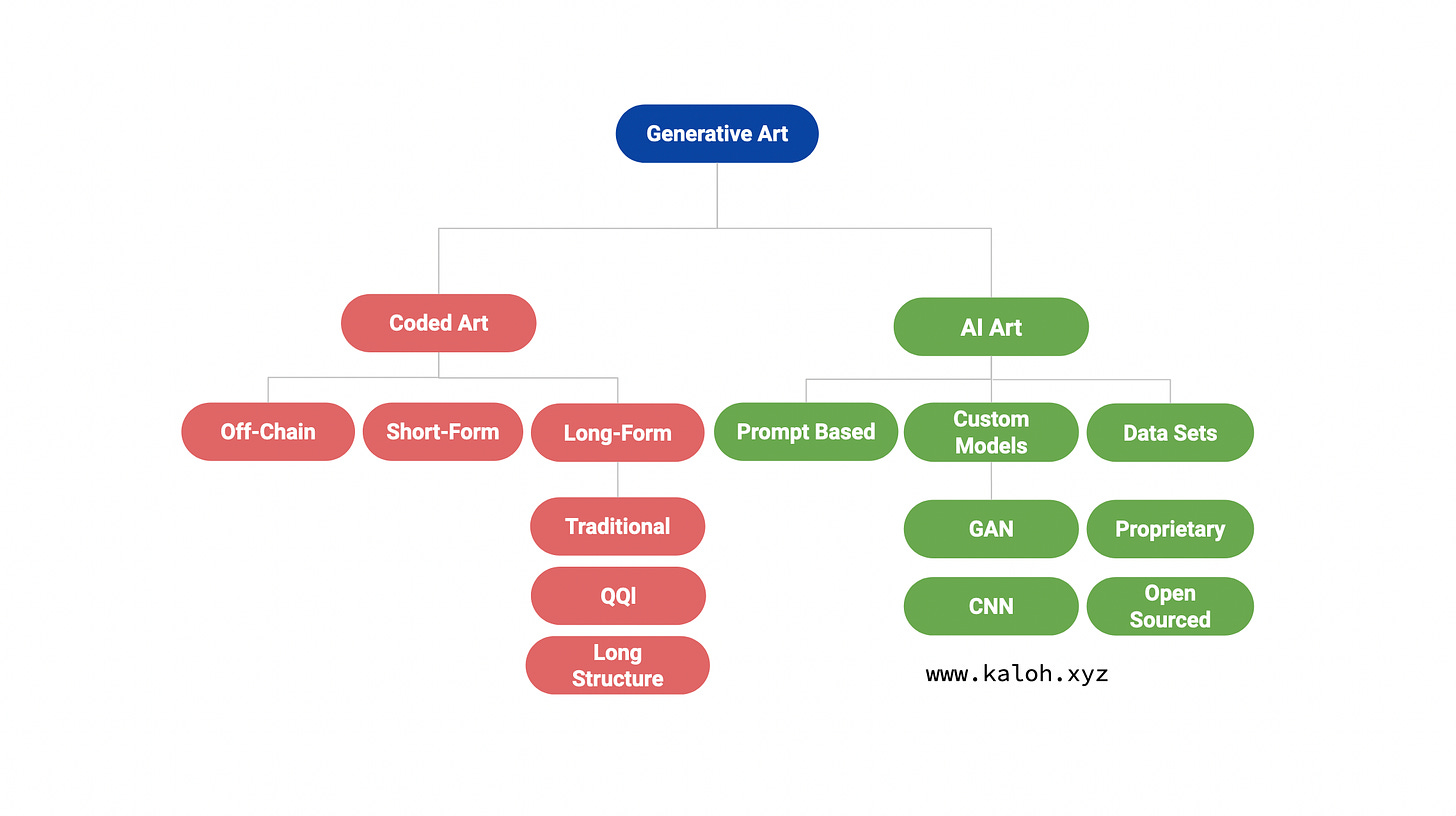
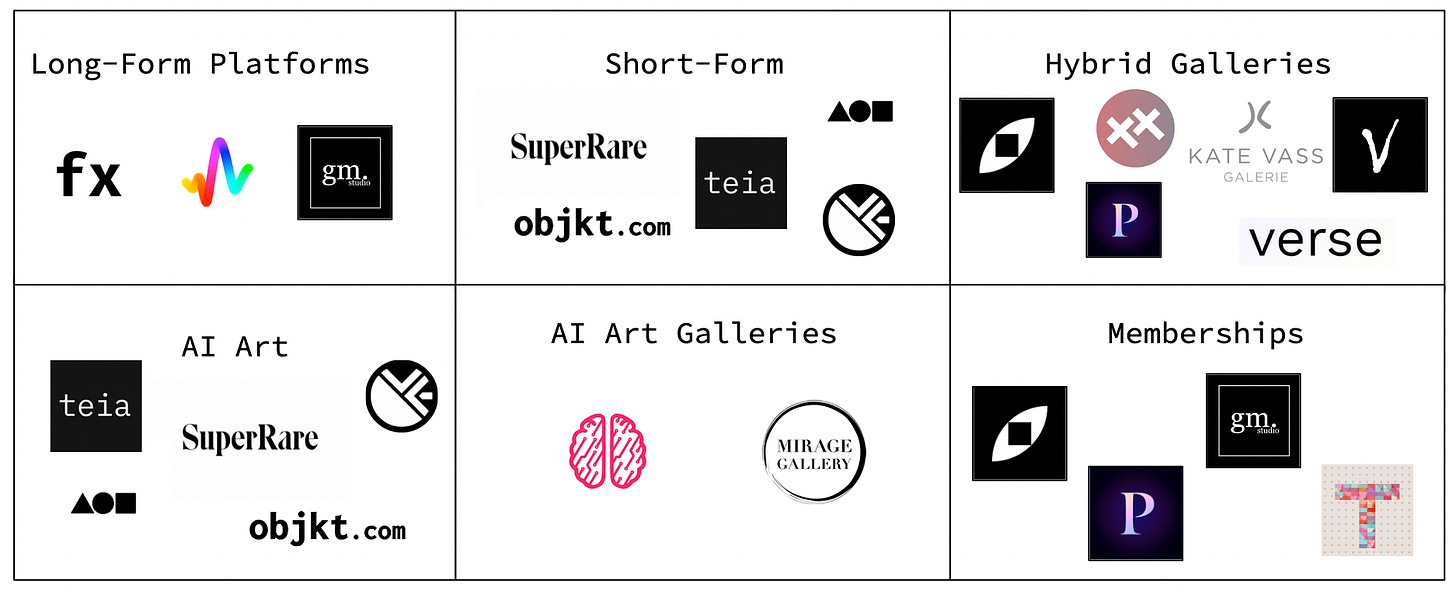
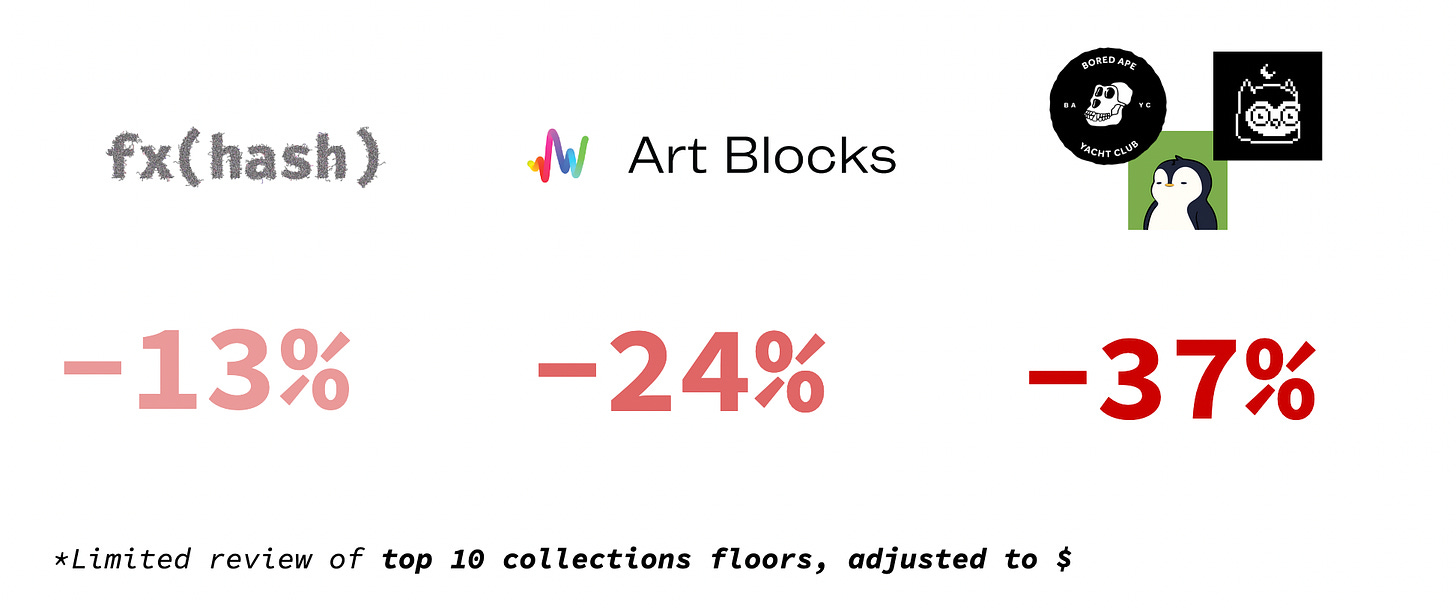
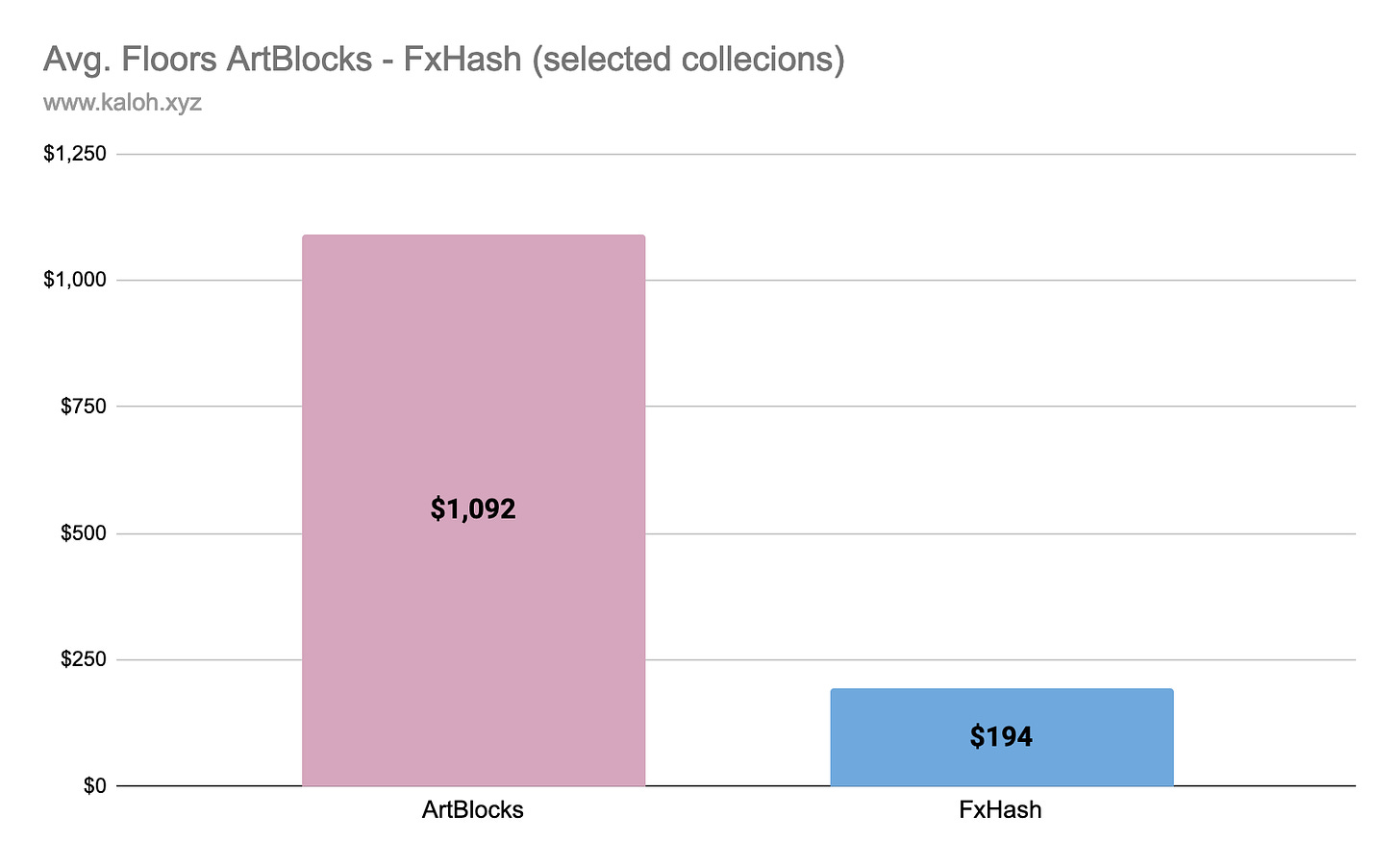
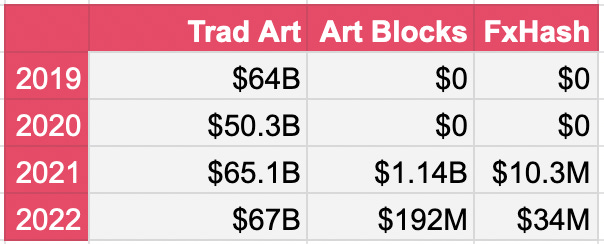
Great article! 🙏